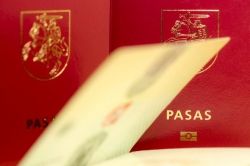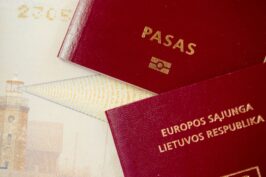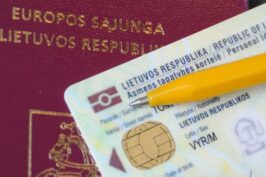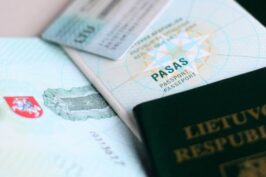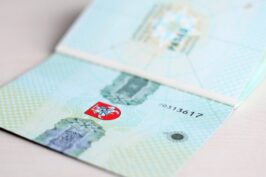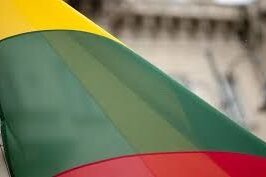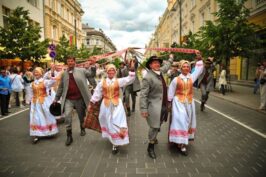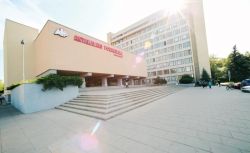- Home
- Regulation of dual citizenship after the restoration of independence of the Republic of Lithuania
Regulation of dual citizenship after the restoration of independence of the Republic of Lithuania
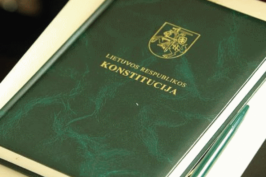
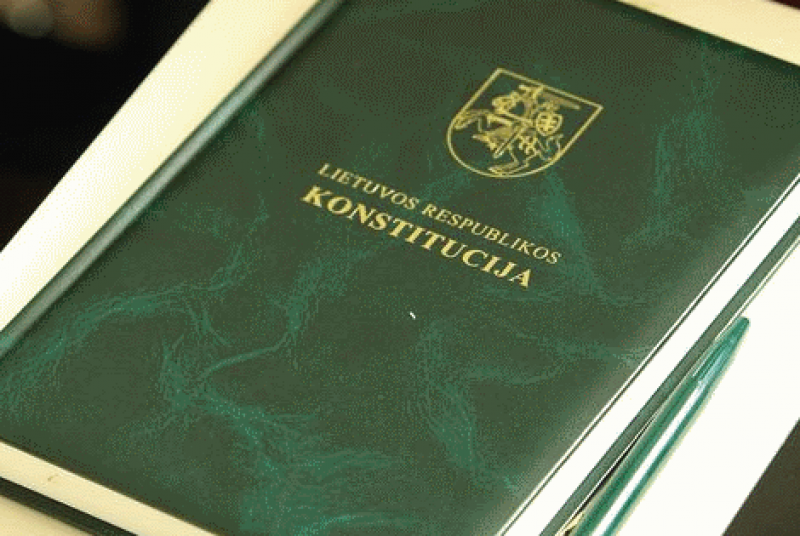
Upon restoration of independence of the Republic of Lithuania on 11 March 1990, issues of citizenship of the Republic of Lithuania were solved on the basis of the Lithuanian SSR Law on Citizenship of 03 November 1989.
Upon re-establishment of an independent state of Lithuania on 11 March 1990, the Provisional Basic Law of the Republic of Lithuania was adopted, Part 1 of Article 13 whereof stipulated that “The attributes of Lithuanian citizenship, conditions and procedures for receiving and losing it shall be defined by the Law on Lithuanian Citizenship”.
It has been established in Article 3 of the Law “Regarding the Provisional Basic Law of the Republic of Lithuania” adopted on 11 March 1991 that “Laws and other legal acts valid in Lithuania until this moment that do not contradict the Provisional Basic Law of the Republic of Lithuania shall remain in force.” There were no legal norms in the Law on Citizenship of the Lithuanian SSR that would contradict the Provisional Basic Law, therefore, this Law became the Law on Citizenship of the Republic of Lithuania after 11 March 1991. The concepts “Lithuanian SSR”, “Citizenship of the Lithuanian SSR”, “Citizen of the Lithuanian SSR” of this Law have been interpreted as changed into the concepts “Republic of Lithuania”, “Citizenship of the Republic of Lithuania”, “Citizen of the Republic of Lithuania”, respectively.
According to Article 1 of the Lithuanian SSR Law on Citizenship of 03 November 1989, the following persons shall be citizens of the Lithuanian SSR:
“1) Persons who were citizens of the Republic of Lithuania, children and grandchildren of such persons, as well as other persons who were permanent residents on the current territory of the Lithuanian SSR prior to 15 July 1940, and their children and grandchildren who now are permanent residents on the territory of the Lithuanian SSR;
2) Persons who have a permanent place of residence in the Lithuanian SSR, provided they were born on the territory of the Lithuanian SSR, or have provided evidence that at least one of their parents or grandparents was born on the said territory, and provided that they are not citizens of another state;
3) Other persons who, up to and including the date of entry into force of this Law, have been permanent residents on the territory of the Republic and have here a permanent place of employment or another constant legal source of support. Such persons shall freely choose their citizenship during two years following the entry into force of this Law;
4) Other persons who have acquired citizenship of the Lithuanian SSR under this Law.”
Part 2, Article 2 of this Law provided for that “Persons referred to in paragraphs 1, 2, and 3 of Article 1 of this Law who wish to acquire the passport of a citizen of the Lithuanian SSR, shall sign a pledge to the Republic promising to observe the Constitution and laws of the Lithuanian SSR, and to respect the sovereignty and territorial integrity of Lithuania”.
According to the Lithuanian SSR Law on Citizenship adopted on 03 November 1989, citizenship of foreign state could only be retained by citizens of another state, who acquired citizenship of the Republic of Lithuania by way of exception.
On 05 December 1991, a new Law on Citizenship of the Republic of Lithuania was adopted, which was valid until 01 January 2003. Then a new Law on Citizenship of the Republic of Lithuania was adopted on 17 September 2002.
Upon adoption of the Law on Citizenship of the Republic of Lithuania on 05 December 1991, a requirement not to have citizenship of another state was not applied to persons of Lithuanian descent who had citizenship of the Republic of Lithuania and departed from Lithuania during the period from 15 June 1940 to 11 March 1990, and to persons residing in other states, who have applied for the reinstatement of citizenship of the Republic of Lithuania.
On 04 April 2011, the Law on Citizenship of the Republic of Lithuania adopted on 02 December 2010 came into force, which clearly defined cases when a citizen of Lithuania may be a citizen of both the Republic of Lithuania and another state at the same time. This Law is also applicable now. On the basis of the Law on Citizenship of the Republic of Lithuania of 02 December 2010, the following are the cases when dual citizenship in the Republic of Lithuania is possible:
- A person was exiled from the occupied Republic of Lithuania before 11 March 1990 or is a descendant of the person who was exiled from the occupied Republic of Lithuania before 11 March 1990 (child, grandchild or great-grandchild);
- A person departed from the Republic of Lithuania before 11 March 1990 or is a descendant of the person who departed from the Republic of Lithuania before 11 March 1990 (child, grandchild or great-grandchild);
- A child has acquaired dual citizenship by birth;
- Cases of adoption;
- Cases of marriage;
- Acquisition of citizenship of the Republic of Lithuania by way of exception or while having refugee status.
Person exiled from the occupied Republic of Lithuania before 11 March 1990 means a person who held citizenship of the Republic of Lithuania before 15 June 1940 or his descendant, who were forcibly expelled from Lithuania by decisions of institutions or courts of occupation regimes in the period from 15 June 1940 to 11 March 1990 for reasons of resistance to occupation regimes, political or social reasons, or reasons of origin.
Person who fled Lithuania before 11 March 1990 means a person who held citizenship of the Republic of Lithuania before 15 June 1940 or his descendant, who left the current territory of the Republic of Lithuania before 11 March 1990 to reside permanently in another state, if their permanent residence on 11 March 1990 was outside Lithuania. This term does not embrace persons who departed from the territory of Lithuania to the territory of the former Soviet Union after 15 June 1940.
According to the data of the Migration Department under the Ministry of the Interior of the Republic of Lithuania, since April 2011 citizenship of the Republic of Lithuania has been restored to 9 661 persons having connection with citizenship of the Republic of Lithuania until 15 June 1940 – these were mostly cases of multiple citizenship. Citizenship of the Republic of Lithuania is most frequently restored by citizens of the following states: Israel, Republic of South Africa, Brazil, Argentina, Uruguay, United States of America, Russia, Ukraine, Venezuela.
MIGRATION LAW CENTER
